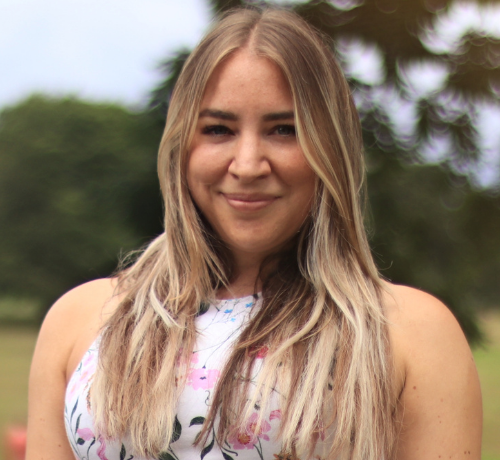After the wrath of a dry, crisp winter and the months of indoor heating that come with it, your hair might be looking a bit parched, dull or just limp. The question now: How do you pump it back up with moisture and nutrients? And what can you do to prevent dry or damaged strands year-round?
Keep reading to learn the tips and tricks that will transform your hair from fried and frizzy to soft and shiny. Plus, learn about what products you should be using to restore moisture long-term.
#include-related-slider#
What Exactly Is Dry Hair?
Dry hair refers to strands that are devoid of moisture or oil. Dry, undernourished hair has a distinct texture. Unlike healthy hair, strands will feel rigid and rough, and you may experience hair breakage.
"Dry hair is defined as hair that does not have enough moisture or water content," explains Florida-based cosmetic chemist Vanessa Thomas. "The dry hair texture is rough, there may be less sheen and—in extreme cases—a lot of breakage or damage."
When figuring out how to moisturize dry hair, you'll first have to determine whether your hair is naturally dry or dry because it's damaged — or both. Dry hair and damaged hair aren't mutually exclusive, and they can often occur simultaneously. So, what's the difference between dry hair and damaged hair?
Dry hair
- Results from moisture loss throughout the scalp and hair
- Feels or looks rough or straw-like
- Has split ends and breaks easily when pulled
- May be accompanied by dry, flaky skin on the scalp
Damaged hair
- Results from broken keratin bonds and subsequent protein deficiency, often due to excessive chemical treatments or heat styling
- Feels brittle or frizzy when dry, and mushy when wet
- Has split ends and breaks very easily when styled
- Grows very slowly or seems to have stopped growing
Learn more: What's the Difference Between Hair Loss and Hair Breakage?
What's At the Root of Dry Hair?
Whether your hair is naturally dry, suffering from harsh treatment or both, it all begins at the scalp. As such, when treating dry hair, it's essential to maintain the oils your scalp produces.
Simply put, a dry scalp grows dry hair. Regardless of your hair's natural texture or type, hair health comes down to the integrity of your scalp. A scalp that is free of debris and buildup is more likely to produce hydrated hair.
To support scalp hydration and cleanliness, the GRO Scalp Detoxifying Serum — an easy-to-use pre-wash treatment — uses a blend of vegan proteins, minerals and phyto-actives to gently but thoroughly clear away buildup. The serum can also restore moisture to the scalp and maintain the scalp's natural oils, thereby sending moisture onto your strands to tackle dry hair with minimal effort.
Damage to the hair's cuticle can also play a part in dry hair. The cuticle is the protective layer that shields strands from damage. The hair cuticle keeps moisture locked in so that strands remain silky-smooth and soft to the touch. If the hair cuticle is ruffled or lifted, it may give the hair a frizzy or ruffled appearance.
Related: What You Can Do to Fix Damaged Hair
The Dry Hair Culprits
Your mane might struggle to retain moisture for a number of reasons, from genetics to your hair care routine. But once you understand the root cause of dry hair, you'll be better equipped to start keeping hair moisturized.
Hair Type
Your scalp produces sebum that works to naturally moisturize your hair as it makes its way down the hair shaft. Without adequate moisture, fine hair, medium hair and thick hair types can all feel dry. In particular, curly or otherwise coarse hair can be prone to dryness because of its naturally bendy structure — the bends make it harder for the sebum to reach all the way down the strand, making the ends dry and brittle.
As we age, our scalps produce fewer natural oils and our sebum production slows. There's no magic wand to fix this issue, but you can prepare for the change by using products that include moisturizing agents. Hydrate hair with a moisturizing shampoo and conditioner that contain clinically proven plant actives and plant-based protein to strengthen strands long-term.
Hair Care Routine
Even if you think your hair routine is fairly standard, it might be harsher than you assume. When used over time, styling products laden with harsh ingredients can leach moisture from your hair. Frequent hair styling with flat irons or curling irons can wreak havoc on your locks, and using a blow dryer set at high heat can also spell trouble.
"I recommend avoiding excessively using heat tools — especially without applying a heat protectant first," Thomas says. "Excess use of hair dye or bleach (especially box-dye products from the drugstore) can also increase dry hair."
The bottom line: Heat styling, dyeing, bleaching or any process that chemically alters your hair can weaken your strands and lead to dry hair.
Environmental Factors
From extreme weather to pollution, environmental factors can be the cause behind your dry hair. For example, too much sun or dry winter weather can put strands under strain. If you live in a bustling city, pollution can create buildup that contributes to clogged pores on the scalp, preventing moisture from reaching your strands. Even healthy habits can have a negative effect without proper protection — swimming, for instance, while a tremendous mindful practice, can make hair feel straw-like and rough after exposure to dehydrating saltwater or chlorine.
Underlying Health Conditions
If you've ditched the heated hair styling and are treating your dry hair with plenty of TLC but still not seeing a difference, check in with a healthcare professional to see if an underlying health issue is at play.
A calcium deficiency, for instance, might make hair feel coarse and dry, and hormone imbalances can create texture abnormalities. Your doctor can help identify any problems and help you restore healthy hair along the way.
The Moisture-Boosting Solutions
Now that we're familiar with the culprits behind dry hair, let's explore options to address it. Dry hair is a nuisance at minimum and debilitating at its worst — but fortunately, there are plenty of natural, vegan resources you can draw upon to reinvigorate dry or damaged strands.
Mask Up Weekly
Using a deep conditioning hair mask once a week will help to moisturize your hair regularly, setting you on the path to alleviating dry hair. Deep conditioner and leave-in conditioner products can help re-fortify the cuticle and encourage additional moisture so hair can continue to grow without breakage.
Take your hair routine a step further with a deep conditioning hair mask packed with plant-based ingredients. VEGAMOUR's best-selling hair mask features Karmatin™, a 100% vegan alternative to keratin, to deeply hydrate hair and prevent moisture loss. The conditioning mask helps moisturize dry hair thoroughly.
Change Your Wash Schedule
Even if you're using a moisturizing shampoo and conditioner, over-washing your strands can cause dryness of the scalp. A dry scalp can lead to dry hair — so if you suspect you're washing too often and have noticed dryness, it's time to make a change.
Start slowly and give your hair time to adjust. At first, skip one wash day a week; then add remove another wash day the following week. If your hair starts to feel softer or your scalp feels less irritated, this could indicate that you've begun restoring your natural oils to moisturize hair organically.
Related: How Often Should You Wash Your Hair?
Choose Shampoos Formulated Without Sulfates
Sulfates can seem appealing because they create that trademark soapy lather as you wash. But they come with a downside — they can also strip dry hair of its natural oils, trigger skin conditions like dermatitis and make the hair feel coarse and dry.
To support moisturized, dry hair, it's best to avoid products that contain sulfates. To find out if a product contains sulfates, look for "sodium lauryl sulfate" or "sodium laureth sulfate" on the ingredient list.
Sulfate-free shampoos and conditioners (as well as leave-in conditioners) can help you avoid dry hair. And if you use a daily shampoo and conditioner, choose options that contain moisturizing agents, such as GRO Revitalizing Shampoo and Conditioner. This duo is totally color safe and made without any harsh sulfates. The gentle formula provides hair with the perfect balance of moisture, volume and shine.
Treat Hair with Care
Your hair is at its most fragile when it's wet. While it's easy to whip a brush through damp strands and heat style right after washing, taking a gentler approach can go a long way toward eliminating hair dryness.
When washing, it's beneficial to use lukewarm water instead of hot water because harsh heat can damage the hair shaft. To protect the hair's cuticles when brushing post-wash, use a wide-tooth comb on wet hair and only switch to the regular brush once your hair is bone-dry.
When styling, ideally, you'll want to skip the heat tools altogether. Heat can negatively affect the hair's pattern — one study found that styling with heat can cause significant breakage and rough texture. If necessary, blow-dry, curl or flat-iron your hair only once it's bone dry.
And what about dry shampoo? It's a last-minute hairstyling mainstay for many of us, but when hiding greasy, oily roots, it's worth choosing a formula that contains natural ingredients rather than harsh chemicals. will keep the hair feeling healthy. In general, always check out the ingredients when it comes to styling products.
Learn more: VEGAMOUR's GRO vs. GRO+ Advanced Hair Wellness Products: What's the Difference?
Use Hair-Friendly Oils (Not Silicones)
Many cheap drugstore shampoos and conditioners contain silicones, synthetic polymers that help detangle hair and add shine — but many silicones can build up on the scalp and perpetuate dry hair. might make your hair feel silky soft, but they do nothing for the condition of your hair. Silicones work by creating a physical coating around the hair shaft to repel water, and they're used in many products because they create an inexpensive shine.
But that cheap shine comes at a cost. Again, silicones coat the hair, but they don't actually help moisturize dry hair, so the shiny appearance is superficial. Hair treatments that contain silicones don't nourish the hair, and worse, they can build up on the strands and scalp over time and exacerbate dryness and damage.
Luckily, you can achieve smooth, luscious hair with a plant-based, silicone-free shampoo and conditioners, serum or foam and even marula oil for the scalp.
#include-related-slider#
Make Your Way to Hydrated Hair
Even if you've been dealing with dry hair for longer than you can remember, there are simple steps you can take to restore moisture and transform the look and feels of your strands. Keep your hair care regimen simple and gentle, choose products that will be kind to your scalp and hair and learn to pay attention to what your strands are telling you. Soon, you'll be well on your way to a healthier mane. (Oh, and don't forget to drink plenty of water!)
More from VEGAMOUR
- How to Do a Hot Oil Treatment for Hair at Home
- 5 Best Treatments for Damaged Hair
- How to Get Rid of Dry Scalp
- Is Jojoba Oil Good For Hair?





















